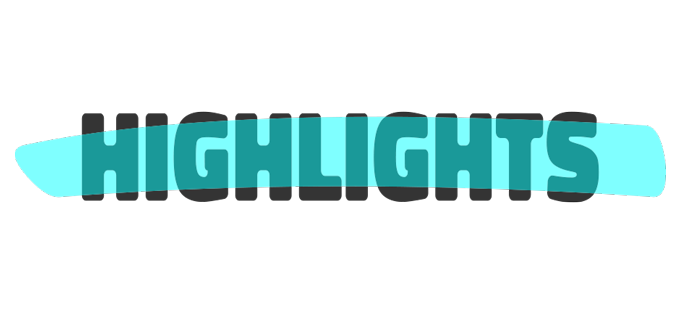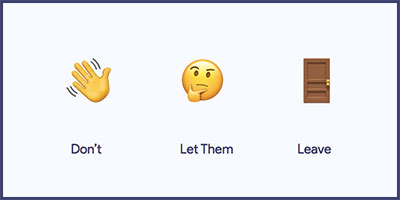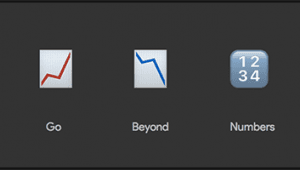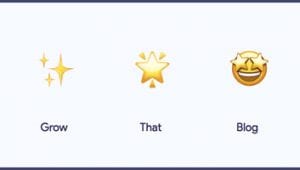Why People Leave Your SaaS Landing Pages (And What to Do About It)
?
Don’t
?
Let Them
?
Leave
Your product is ready; it’s got a simple signup and a nice onboarding process.
You did the hard work of driving traffic to your landing pages, and now you’re hoping visitors convert. ?
All that work, yet people bounce when they land on your page.
What’s going on?
The challenge with landing pages is that it’s difficult to quickly pinpoint the design and copy elements that make visitors leave. That’s why, when optimizing landing pages, you want to change one thing at a time, no more.
To help you get started creating more effective landing pages, we put together a list of the 8 most common reasons why people leave SaaS landing pages:
1. Your SaaS Landing Pages Attract the Wrong People
It doesn’t matter how much traffic you send to your landing pages if it’s not the right traffic.
If your product’s target audience is professionals, but all your visitors are consumers, your conversion rate will suffer.
According to Google Analytics, the average bounce rate for landing pages is 70 to 90%.
Although a part of the role of your landing page is to quickly disqualify bad leads, if your landing page’s bounce rate is above 90%, it’s quite likely that you’re driving the wrong people to your site.
How to uncover issues: Look at your SaaS landing page’s bounce rate in Google Analytics (Behavior > Site Content > Landing Pages). Is it above (or under) your benchmark?

Dive deeper into the profiles of the people that signed up using LinkedIn and Clearbit Connect. Are the people that signed up, the people you were hoping to attract?
How to address issues: Understand the full customer journey. Find where your prospects hang out. Look at the blogs they read through what they share on social media. Test different traffic sources. Once you’re starting to get new signups, evaluate how their profiles match your customer target.
2. They Give Up Before Even Getting to Your Landing Page
The way your landing page is set up may be responsible for a part of your bounce rate. If your SaaS landing page does not load within 2 to 3 seconds, words and design won’t matter, because your visitors will have left.
More so, in 2019, mobile represents over 52% of all Internet traffic. Your visitors expect fast-loading landing pages that are optimized for their devices. If your landing pages are not mobile-friendly (mobile-first even), visitors will move on to the next product.
How to uncover issues: Test your landing pages across devices using cross-platform testing tools like BrowserStack or Browsershots. Compare results to the most popular devices in your market. Use PageSpeed Insights to benchmark load speed and your mobile layout.

How to address issues: Use a mobile-friendly theme for your landing page. Improve load speed by optimizing image size, page requests, browser cache, etc. If speed doesn’t sufficiently improve, consider switching to a faster hosting solution.
3. Your SaaS Landing Pages Don’t Inspire Confidence
Did you ever land on a website and your gut reaction was simply: “No thanks”?
Turns out that, it only takes 50 milliseconds (0.05 seconds) for a visitor to form an opinion on your landing page, and that, visual design – logo, navigation, site layout, images, etc – is what has the most influence over a visitor’s first impression.
Visitors make split-second decisions on whether or not they can trust your website. They’re looking for trust drivers to confirm that your landing page is worth their time.
How to uncover issues: Right audience? No mobile or speed issues? Users still leave right when they arrive on your landing page? Install an heat map analytics platform like Hotjar, CrazyEgg or Lucky Orange to figure out how (and if) your visitors interact with your page. Run a few Five second (or user) tests to understand first impressions.
How to address issues: Use a template to create your landing page. Try to follow industry conventions to create familiarity. Invest in a professional logo. Make sure your site has SSL encryption (think https://…). Add customer logos from known companies or publications for social proof.
4. Your SaaS Landing Pages Don’t Draw Visitors In
Beyond inspiring trust, the first screen of your landing page (above the fold) needs to either:
- Catch the visitor’s attention (e.g. “This looks interesting…”);
- Confirm that the product matches their expectations (e.g. “I was looking for shoes, this is a shoe landing page. ?”).
AND/OR
The headline, image, and first paragraph all need to work together to draw the visitor in.
The role of the first screen is to create matching between the visitor’s expectations and the value of your product.
How to uncover issues: Looking at scroll heat maps (below ?) or screen recordings, you’ll be able to figure out if visitors scroll or interact with your landing page. Your goal is to find out if visitors consider your product, but move on right away before scrolling down the page.

How to address issues: This is where real landing page optimization begins. Dive deeper into your target customer profiles. Look for ways to better communicate the value of your product. Communicate in a way that resembles your potential customers. Test different headlines. Run A/B tests if you have a decent volume of traffic.
5. Your SaaS Landing Pages Don’t Build Momentum
When you write a blog post, a landing page, or an email, make your customer the hero. Your job is to give them a plan and guide them to success.– Justin Jackson, Transistor.fm Co-Founder
When you write a blog post, a landing page, or an email, make your customer the hero. Your job is to give them a plan and guide them to success.– Justin Jackson, Transistor.fm Co-Founder
As prospects read your landing page, you want them to be nodding along, gradually gaining momentum, before they ultimately signup.

If this happens, it means that your landing page managed to catch and sustain their attention; it means that those visitors saw a bit of themselves in your page copy.
The truth is, the length of your page copy won’t matter if the offer is compelling and speaks to your visitors’ problems. That said, to make your page truly effective, visitors have to be able to get the same effect while skimming the landing page.
How to uncover issues: Using heat maps and screen recording tools, focus on the visitors that scrolled past the first screen: Were they reading or skimming your landing page copy? Did they drop off halfway through or made it to the end? Did they convert after reaching the end of your landing page?
How to address issues: Analyze your SaaS landing pages from top to bottom. Find the most common breakpoints, and make changes to those parts of your page. Restart recordings and heat maps, and test again. The goal is to optimize for conversions, not scrolls.
6. Your SaaS Landing Pages Don’t Overcome Objections
Your landing page’s supporting copy should help overcome objections. As visitors scroll down the page, the copy should help answer the bulk of their questions about your product.
They might engage with your landing page and be compelled by your pitch, but if they can’t find the answers to their questions, they’ll just move on and get the next product that can.
How to uncover issues: Visitors scroll and eventually click off your SaaS landing page to visit secondary pages (pricing, FAQ, video, support, case studies, etc). They leave a lot of questions in your live chat. They spend a lot of time on your signup page without ultimately converting. You can see their questions in your search analytics. They’re engaged, but they don’t convert.
How to address issues: Be available on live chat. Answer (and take note of) any questions site visitors have for you. Dig deeper when having discussions to understand the true objections (e.g. “What do you mean by that?”). Rework your landing page copy to help answer common objections. Add a FAQ to answer less frequent questions. Iterate.
7. They Don’t Offer Clear Next Steps
Your visitors engage with your landing page. They’re reading and seem interested, but they don’t make it to your signup page or signup form. What’s going on?
Your landing page may be doing a great job of promoting the value of your product, but it may not be making it clear enough what the next steps are for visitors willing to convert. Do they need to signup for a demo, start a free trial, or pay up front to start a subscription?
If visitors are interested in your product, but they don’t know how to get started, they’ll leave frustrated.
How to uncover issues: Look at visitors heavily engaging with your landing pages and focus on sessions over a minute or two. Do at least 10 to 20% of them click your call-to-actions? Do they move on to the next step? When watching session recordings, does it look like they’re actively looking for a form or button to signup?
How to address issues: Experiment with larger buttons, text links, different colors, or with repeated call-to-actions (e.g. one clear cta button per screen). Make one change at a time. Highlights will help you monitor the impact that those changes are having on landing page conversion.
8. Your SaaS Landing Pages Make it Difficult to Convert
You managed to convince visitors to signup and convert. They reach your signup page or display your signup form, but they don’t complete the process. They’ve shown intent, but did not go through your signup flow. What happened?
Your signup form not only needs to be reassuring (trust drivers, encryption, etc), it also needs to make an appropriate ask. Keep your signup form short and conversion-focused. Make it easy for your users to convert.
How to uncover issues: By looking at page or form funnels via Google Analytics or Hotjar, you’ll be able to see where visitors drop off. Did they start filling out your form fields, but dropped off before completing it? At which input field did they stop? Were there any issues with form submission?

How to address issues: Make sure that the content on your signup page reinforces the value of signing up. If visitors consistently start completing your form, but fail to complete it, consider removing optional input fields. Clarify field labels.
What the Best SaaS Landing Pages Have in Common
The Internet has been around for almost 30 years now. What started as the wild west with overlapping images, animated backgrounds and creative site navigations have become increasingly standardized over the years.
Certain website and landing page structures won out and became the norm. We’ve become accustomed to certain flows and information being available on product landing pages. This, in turn, has created expectations for what a SaaS landing page should be.
In order to compare and assess products, visitors and buyers look for the information they’ve come to expect from SaaS landing pages. Your SaaS landing page is thus compared to those expectations, and fails when key information is missing.
To make sure you cover all the core points, expert copywriter Joanna Wiebe of CopyHackers created the following model to breakdown the messaging hierarchy for landing pages:

You can use this model when creating or optimizing your product landing pages. It will allow you to build on solid ground as you learn from your visitors.
The best SaaS landing pages start with a proven model. They become more “on brand” and creative when the business starts to really know what connects with the market.
A good example of this is MailChimp. Their landing pages don’t always follow conventions, but they’re able to do that because they know their visitors, users and buyers better than anyone else.
Get to know your visitors and refine your landing pages. The only way to make your landing pages great is to put them out there and iterate. ?





Leave a Reply
Want to join the discussion?Feel free to contribute!